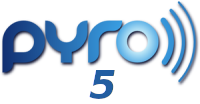Installing Pyro¶
This chapter will show how to obtain and install Pyro.
Pyro5¶

Pyro4 is considered feature complete and new development is frozen. Only very important bug fixes (such as security issues) will still be made to Pyro4. New development, improvements and new features will only be available in its successor Pyro5 . New code should use Pyro5 unless a feature of Pyro4 is strictly required. Older code should consider migrating to Pyro5. It provides a (simple) backwards compatibility api layer to make the porting easier.
Compatibility¶
Pyro4 is written in 100% Python. It works on any recent operating system where a suitable supported Python implementation is available (2.7, or 3.5 and newer). It also works with Pypy (2 and 3). Maybe it also works with other Python implementations, but those are not tested. (if you only need to write client code in Jython/Java, consider using Pyrolite - client library for Java and .NET instead!)
Note
When Pyro is configured to use pickle, cloudpickle, dill or marshal as its serialization format, it is required to have the same major Python versions on your clients and your servers. Otherwise the different parties cannot decipher each others serialized data. This means you cannot let Python 2.x talk to Python 3.x with Pyro, when using those serializers. However it should be fine to have Python 3.5 talk to Python 3.6 for instance. The other protocols (serpent, json) don’t have this limitation!
Obtaining and installing Pyro¶
- Linux
- Some Linux distributions offer Pyro4 through their package manager. Make sure you install the correct one for the python version that you are using. It may be more convenient to just pip install it instead in a virtualenv.
- Anaconda
- Anaconda users can install the Pyro4 package from conda-forge using
conda install -c conda-forge pyro4 - Pip install
pip install Pyro4should do the trick. Pyro is available here on pypi.- Manual installation from source
- Download the source distribution archive (Pyro4-X.YZ.tar.gz) from Pypi or Github, extract and
python setup.py install. The serpent serialization library must also be installed. If you’re using a version of Python older than 3.5, the selectors2 or selectors34 backported module must also be installed to be able to use the multiplex server type. - Github
- Source is on Github: https://github.com/irmen/Pyro4 The required serpent serializer library is there as well: https://github.com/irmen/Serpent
Third party libraries that Pyro4 uses¶
- serpent - required
- Should be installed automatically when you install Pyro4.
- selectors34 - required on Python 3.3 or older
- Should be installed automatically when you install Pyro4.
- selectors2 - optional on Python 3.4 or older
- Install this if you want better behavior for interrupted system calls on Python 3.4 or older.
- dill - optional
- Install this if you want to use the dill serializer.
- cloudpickle - optional
- Install this if you want to use the cloudpickle serializer.
- msgpack - optional
- Install this if you want to use the msgpack serializer.
Stuff you get extra in the source distribution archive and not with packaged versions¶
If you decide to download the distribution (.tar.gz) you have a bunch of extras over simply installing the Pyro library directly. It contains:
- docs/
- the Sphinx/RST sources for this manual
- examples/
- dozens of examples that demonstrate various Pyro features (highly recommended to examine these, many paragraphs in this manual refer to relevant examples here)
- tests/
- the unittest suite that checks for correctness and regressions
- src/
- The actual Pyro4 library’s source code (only this part is installed if you install the
Pyro4package)- and a couple of other files:
- a setup script and other miscellaneous files such as the license (see Software License and Disclaimer).
If you don’t want to download anything, you can view all of this online on Github.